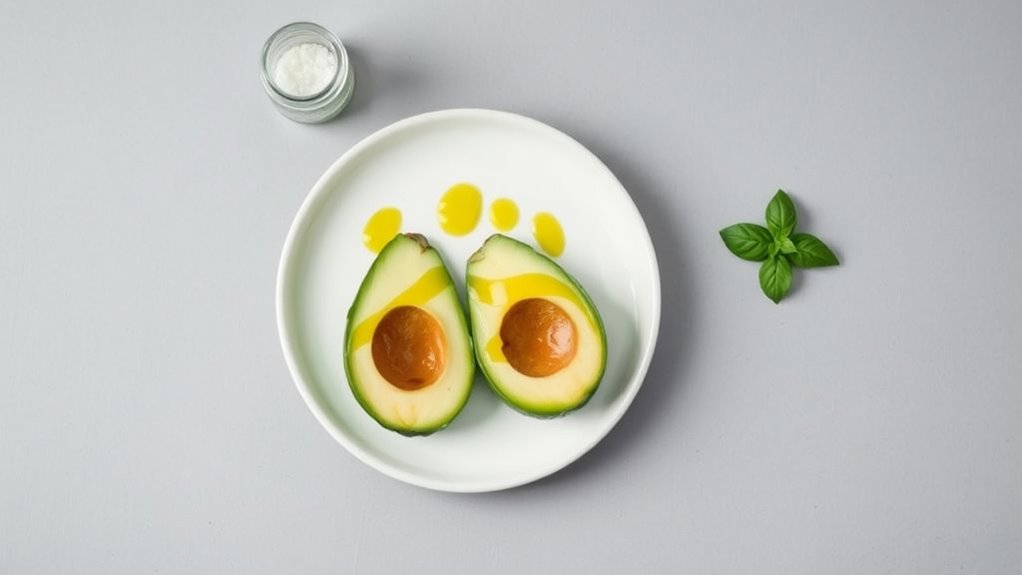Minimalist cooking focuses on using just a few high-quality ingredients to create flavorful, versatile dishes. It encourages appreciating each component, boosting your creativity without complex techniques. By prioritizing staples like grains, beans, and herbs, you can whip up quick, satisfying meals for breakfast, lunch, or dinner. Simplifying your kitchen routine helps you learn to combine ingredients thoughtfully. Keep exploring this approach, and you’ll discover how easy enjoyable, wholesome meals can be.
Key Takeaways
- Focus on a few high-quality ingredients to create flavorful, balanced dishes without complexity.
- Use versatile staples like grains, beans, and herbs to build simple, satisfying meals.
- Emphasize natural flavors through minimal seasoning and fresh ingredients.
- Plan meals around seasonal produce to enhance taste and reduce ingredient needs.
- Incorporate batch cooking and prep to streamline preparation and minimize kitchen clutter.
The Benefits of Embracing Minimalist Cooking

Embracing minimalist cooking can substantially improve your overall kitchen experience. By focusing on fewer ingredients, you gain a deeper appreciation for how cultural influences shape flavor combinations.
Simplifying recipes allows you to explore the essence of each ingredient, highlighting its unique qualities. This approach encourages creativity and experimentation, as you learn to balance flavors without relying on complex techniques or numerous components. Additionally, minimal ingredient lists promote mindful eating, encouraging you to pay closer attention to textures and tastes. Incorporating authentic materials like wood and linen in your kitchen can also inspire a rustic, cozy ambiance that complements your minimalist approach to cooking.
Furthermore, understanding the flavor profiles of individual ingredients helps you craft more harmonious dishes with fewer components. Developing a keen awareness of seasonal ingredients can enhance the freshness and authenticity of your dishes, making your minimalist approach even more rewarding. Overall, embracing minimalism elevates your cooking and broadens your palate.
Essential Ingredients for a Versatile Pantry
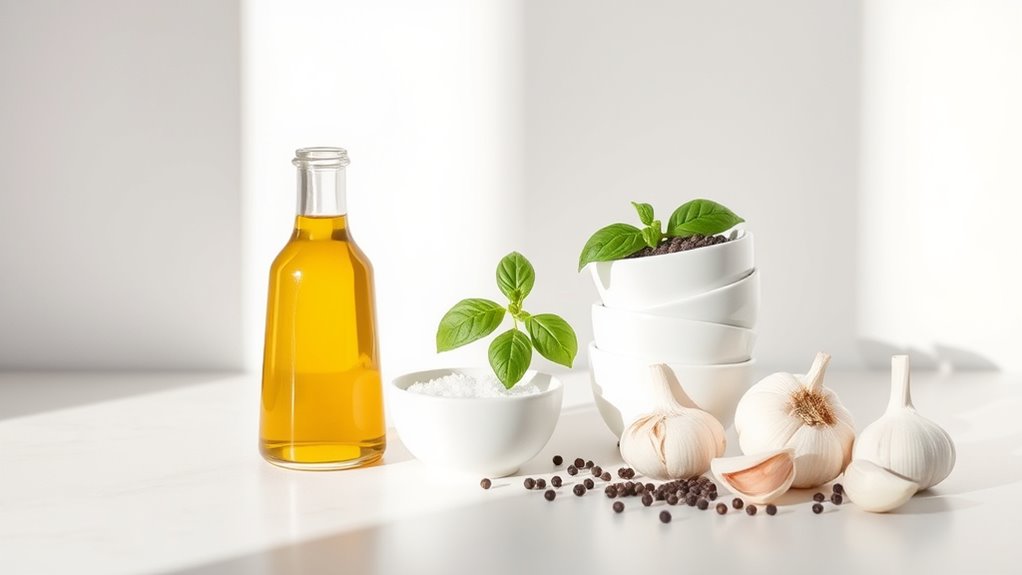
Building a well-stocked pantry is the foundation of minimalist cooking, allowing you to create a wide range of dishes with just a few key ingredients. To maximize your meal prep strategies and keep things simple, focus on versatile staples.
A well-stocked pantry with versatile staples makes minimalist cooking simple and satisfying.
First, stock up on grains like rice or pasta—they serve as a base for many meals.
Second, include canned or dried beans, which add protein and texture effortlessly.
Third, keep your spice shelf essentials, such as salt, pepper, and dried herbs, within arm’s reach to enhance flavors easily. Additionally, understanding the costs of various electric bikes can inspire you to invest in versatile, eco-friendly transportation options that complement a sustainable lifestyle.
These ingredients form a flexible core, enabling quick, tasty meals with minimal effort. Embracing creative storytelling in your meal descriptions can also make your simple dishes more appealing and memorable.
With these essentials, you’ll find cooking simpler and more satisfying, even on busy days.
Quick and Delicious Breakfasts With Just a Few Items
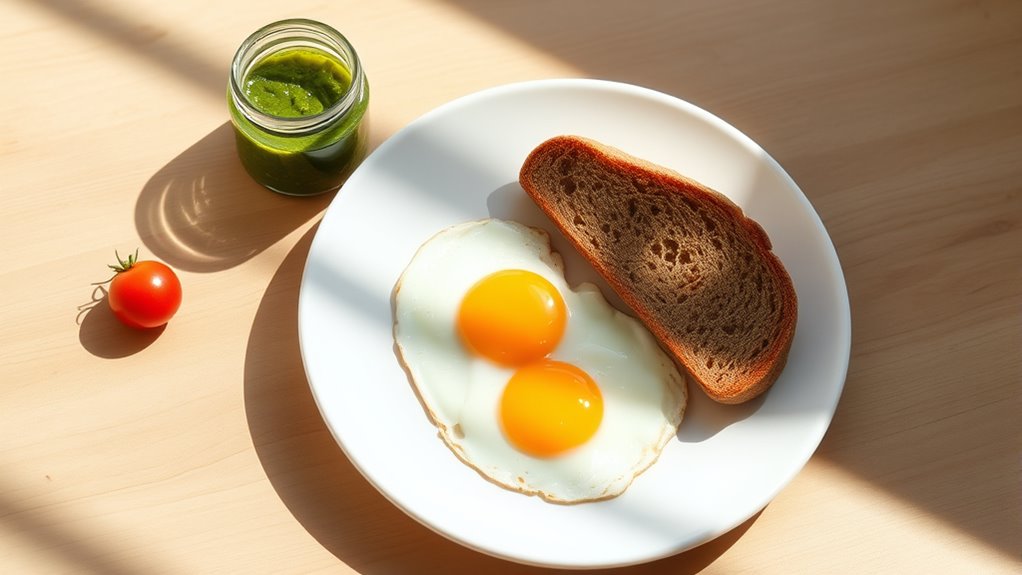
Starting your day with a quick and tasty breakfast doesn’t have to be complicated or time-consuming. With a little meal prep, you can assemble simple, flavorful options using just a few ingredients.
For example, whip up a yogurt parfait with layered fruit and nuts or scramble eggs with cheese and spinach. Focus on flavor combinations that complement each other, like sweet and savory or creamy and crunchy, to keep things interesting.
You can also prepare overnight oats or make a quick smoothie with banana and berries for a nourishing start. These breakfasts aren’t only easy to put together but also adaptable, allowing you to mix and match ingredients based on what’s in your pantry.
Implementing automation technologies in meal prep or kitchen gadgets can help streamline your morning routine and save time. Minimal effort, maximum flavor—your mornings just got simpler.
Wholesome Lunches and Dinners Made Simple
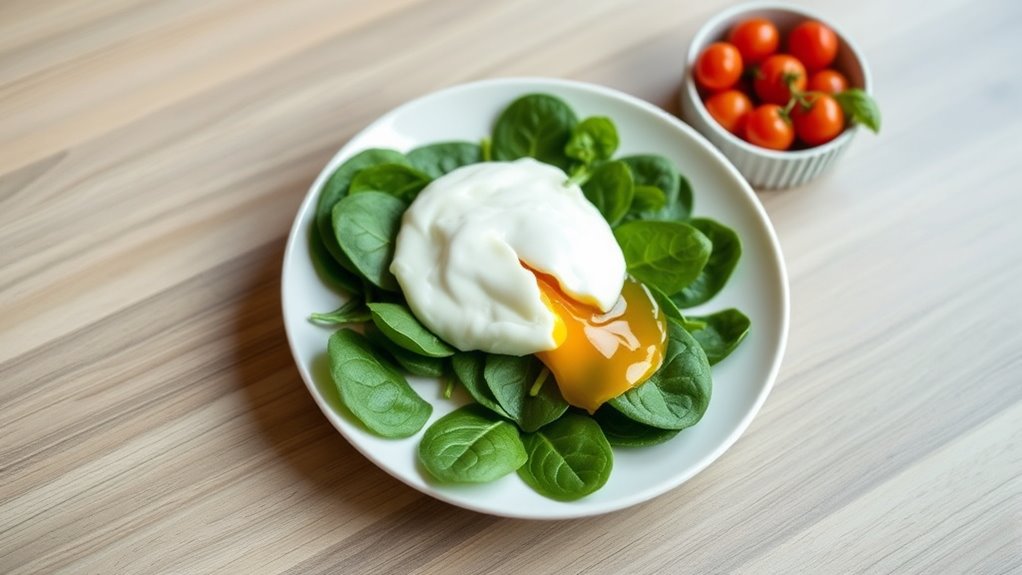
Simplifying your lunch and dinner routines is easier than you might think, especially when you focus on wholesome ingredients and minimal prep. To save time and boost flavor, try these meal prep strategies and flavor enhancement techniques:
- Use versatile ingredients like roasted vegetables or cooked grains that can be repurposed for multiple meals throughout the week. Incorporating space-saving solutions can further streamline your kitchen organization and improve efficiency. Additionally, selecting compatible electric bike conversion kits can make commuting to the grocery store more effortless, freeing up time for meal prep.
- Incorporate simple seasonings—like lemon, herbs, or garlic—to enhance natural flavors without extra effort.
- Prepare ahead by portioning out proteins and sides in advance, making assembly quick and easy.
- Paying attention to color accuracy can help you better assess the freshness and quality of your ingredients, ensuring your meals look as appealing as they taste.
These tips help you enjoy nutritious, satisfying meals with fewer ingredients.
Tips for Mastering Minimalist Cooking at Home
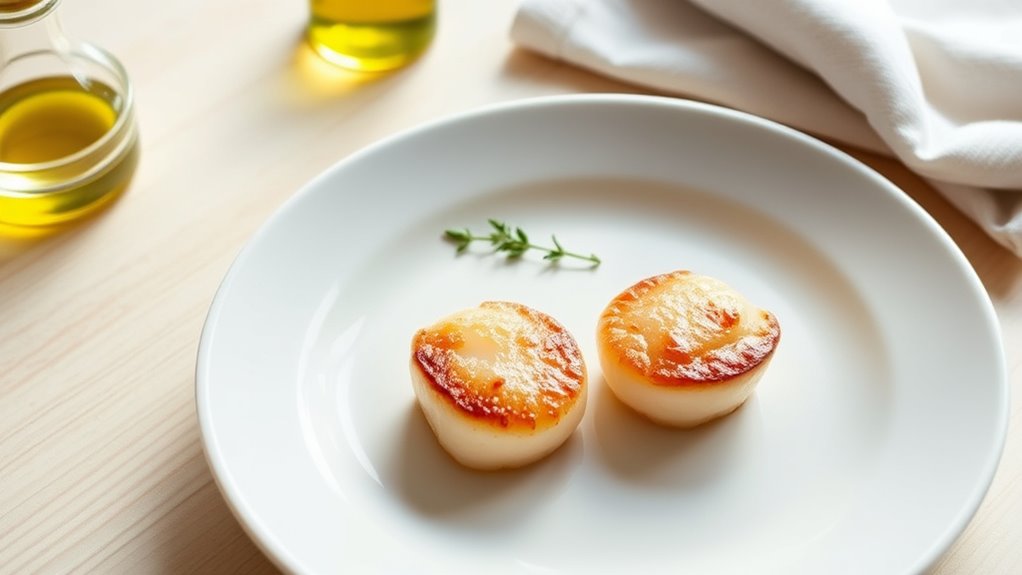
Mastering minimalist cooking at home begins with embracing fewer ingredients and straightforward techniques. Focus on simple meal prep strategies to save time and reduce waste—batch cook ingredients like grains or roasted vegetables to streamline your week. Incorporate easy-to-clean tools and storage solutions to maintain a clutter-free kitchen environment. Prioritize flavor pairing techniques by combining ingredients that naturally complement each other, such as tomatoes and basil or lemon and garlic. Use quality basics like good olive oil and fresh herbs to elevate simple dishes. Keep your pantry stocked with versatile staples to mix and match effortlessly. Don’t overcomplicate; instead, hone your skills in balancing flavors and textures with just a few ingredients. Over time, you’ll develop intuition for creating satisfying, minimalist meals that require minimal effort but deliver maximum flavor.
Frequently Asked Questions
Can Minimalist Cooking Suit All Dietary Restrictions?
You might wonder if minimalist cooking suits all dietary restrictions. It can, especially when you incorporate plant-based options and gluten-free adaptations. By focusing on simple, wholesome ingredients, you can easily customize recipes to meet your needs.
While some restrictions may require extra planning, minimalist cooking’s flexibility allows you to create satisfying, tailored meals without complex ingredients, making it a versatile approach for diverse dietary requirements.
How Do I Adapt Recipes for Different Cuisines With Fewer Ingredients?
Sometimes, you need to gently steer a recipe to fit your needs. To adapt recipes for different cuisines with fewer ingredients, focus on ingredient swapping to capture authentic flavors.
Use techniques like flavor enhancement with spices or herbs to deepen taste profiles. This way, you maintain the essence of the cuisine while keeping it simple.
Your creativity becomes the key, allowing you to enjoy diverse dishes without overcomplicating your cooking.
What Are Some Common Mistakes to Avoid When Starting Minimalist Cooking?
When starting minimalist cooking, avoid overcomplicating flavors by trying to add too many spices or ingredients. Stick to fresh, quality items instead of relying on pre-made ingredients, which can overshadow the natural taste.
Don’t rush the process; simplicity is key. Remember, less is more, so focus on balancing flavors and highlighting core ingredients.
This approach helps you create delicious meals without unnecessary complexity.
How Can Minimalist Cooking Help Reduce Food Waste?
Think of minimalist cooking as a modern-day Marie Kondo for your kitchen. By focusing on fewer ingredients, you improve food preservation, reducing spoilage and waste.
You also become more intentional with ingredient sourcing, buying only what you need. This mindful approach helps you avoid excess, saves money, and minimizes waste, making your kitchen more sustainable.
It’s a simple way to respect your food and the environment while enjoying delicious, uncomplicated meals.
Are There Specific Tools Recommended for Minimalist Meal Prep?
You’ll find that essential gadgets like a good chef’s knife, cutting board, and versatile utensils such as tongs and spatulas make meal prep easier and more efficient.
These tools help you focus on simple ingredients and quick assembly, reducing waste.
Keep your setup minimal with multi-purpose gadgets, so you spend less time cleaning and more time enjoying your meals.
With the right tools, minimalist cooking becomes straightforward and enjoyable.
Conclusion
As you embrace minimalist cooking, remember it’s like tending a small garden—focusing on a few quality ingredients can yield beautiful, satisfying results. When I started simplifying my recipes, I found that less truly is more, and cooking became less stressful and more enjoyable. Just as a tiny seed grows into a vibrant plant, your simple ingredients can lead to delicious, wholesome meals. Keep it simple, stay creative, and watch your confidence—and your dishes—flourish.
